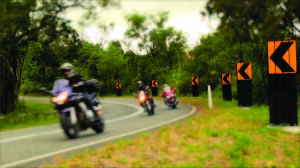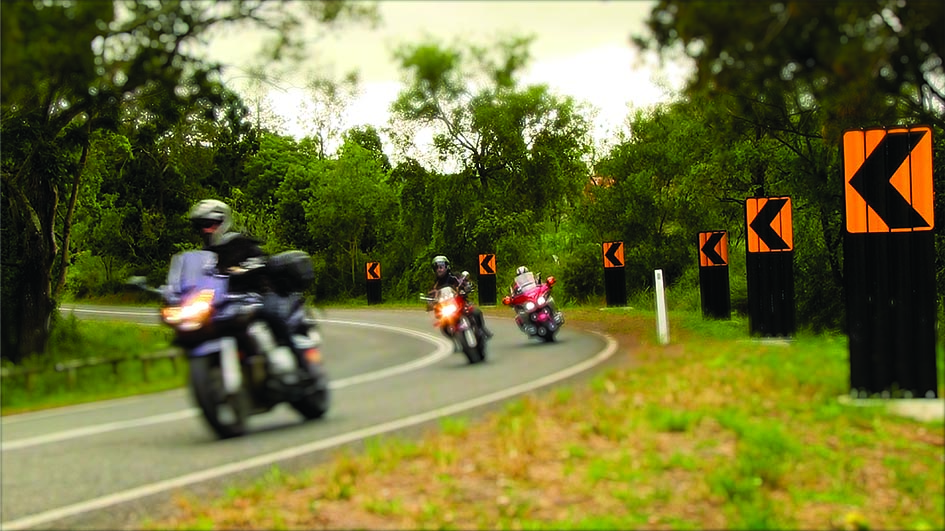A visual trick with road markings that makes the road look narrower than it is could be an aid in increasing motorcycle safety.
It’s called perceptual countermeasure and it was developed by Melbourne’s Monash University in 1999 and has been rolled out on some roads with lines to show braking zones. The lane markings are designed to reduce motorists’ speed on the approach to deceptive corners.
Now, the New Zealand Transport Agency is using the lane marking to specifically target motorcycle road crashes in the popular biking regions of Waikato and Bay of Plenty. The 130km Southern Coromandel Loop (Kopu/Whangamata/Waihi/Paeroa/Kopu) has experienced a disproportionately high number of serious motorcycle crashes in recent years. While just 1-3% of vehicles on the route are motorcycles, they represent 44% of all fatal and serious injury crashes.
The perceptual countermeasure lane markings are particularly effective for riders because they change the way the road is perceived and improve riders’ lane positioning for corner entry.

Mackie Research and Consulting says the road markings will provide riders with advanced warning of the actual geometry of the curve ahead. The NZ Transport Agency will monitor and analyse the effect of these markings. Other safety improvements being trialled include upgraded signage, road surface improvements, removal or protection of roadside hazards and new rescue helicopter landing areas.
It would be good to see more authorities implementing similar strategies to save riders’ lives, rather than relying on a “speed kills” and speed camera strategy.
Queensland company RUD Chains has been having limited success in getting its bendy and low-impact roadside signs installed on popular motorcycle routes. So far they have only been installed at three sites in Queensland, two sites in Tasmania and two sites in Western Australia.
Queensland Transport figures show that one in three motorcycle fatalities is the result of riders running off the road and hitting roadside obstacles. While there is no specific data related to road signs, roadside “furniture” has been identified as a significant contributor to motorcycle rider casualties. Another advantage of the signs is the lower cost of maintenance as the signs rarely need to be fixed after a crash.



